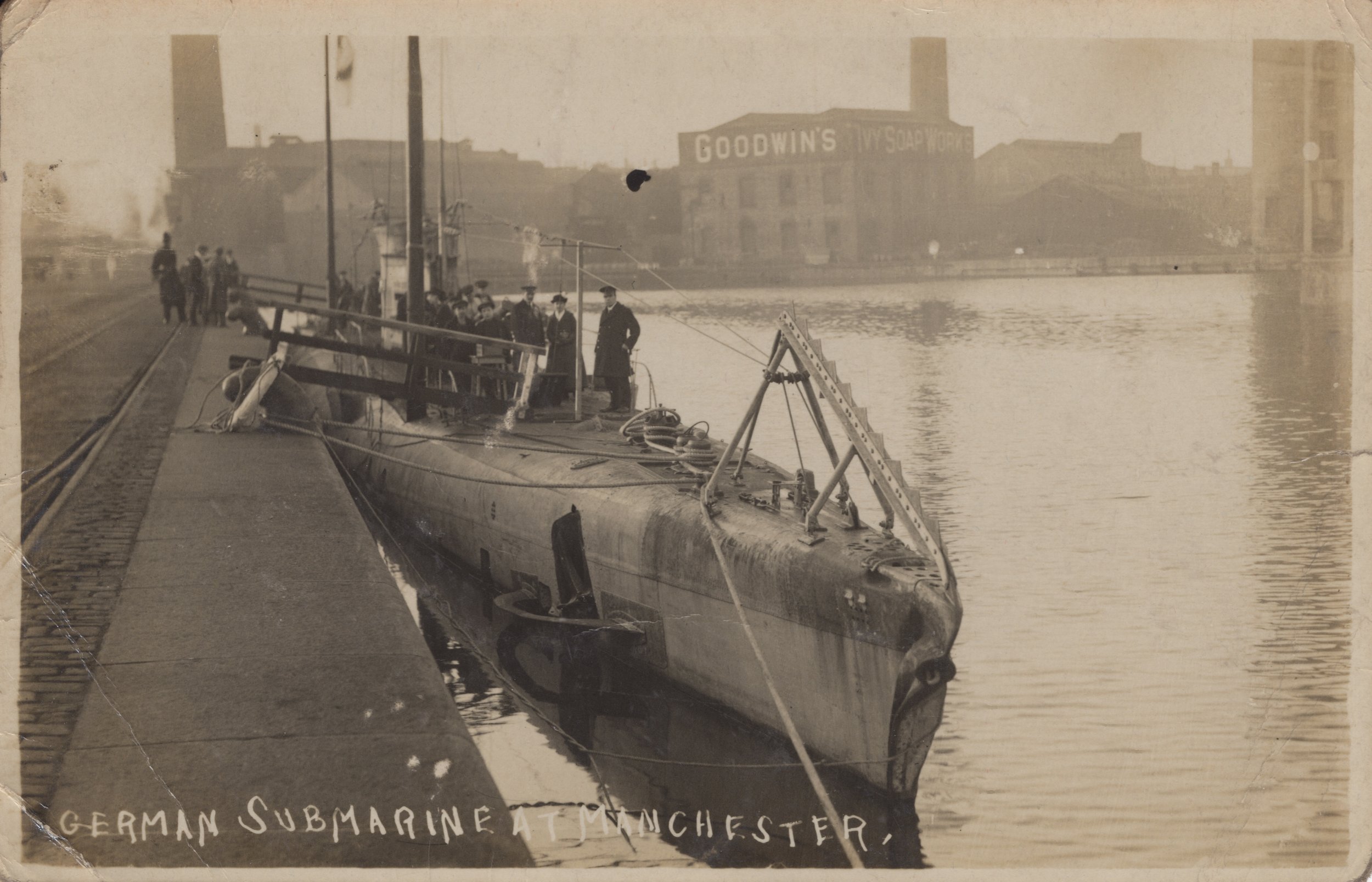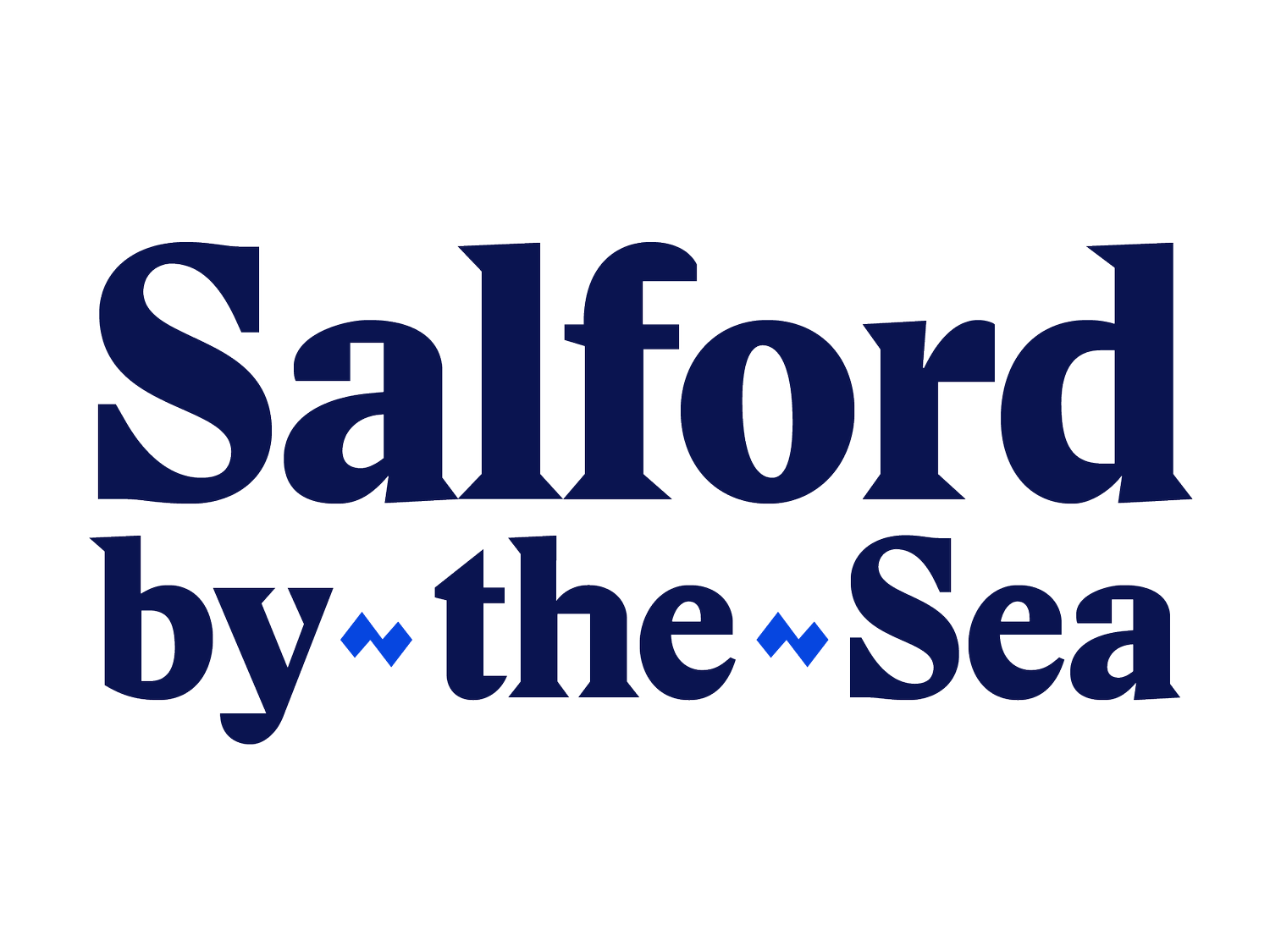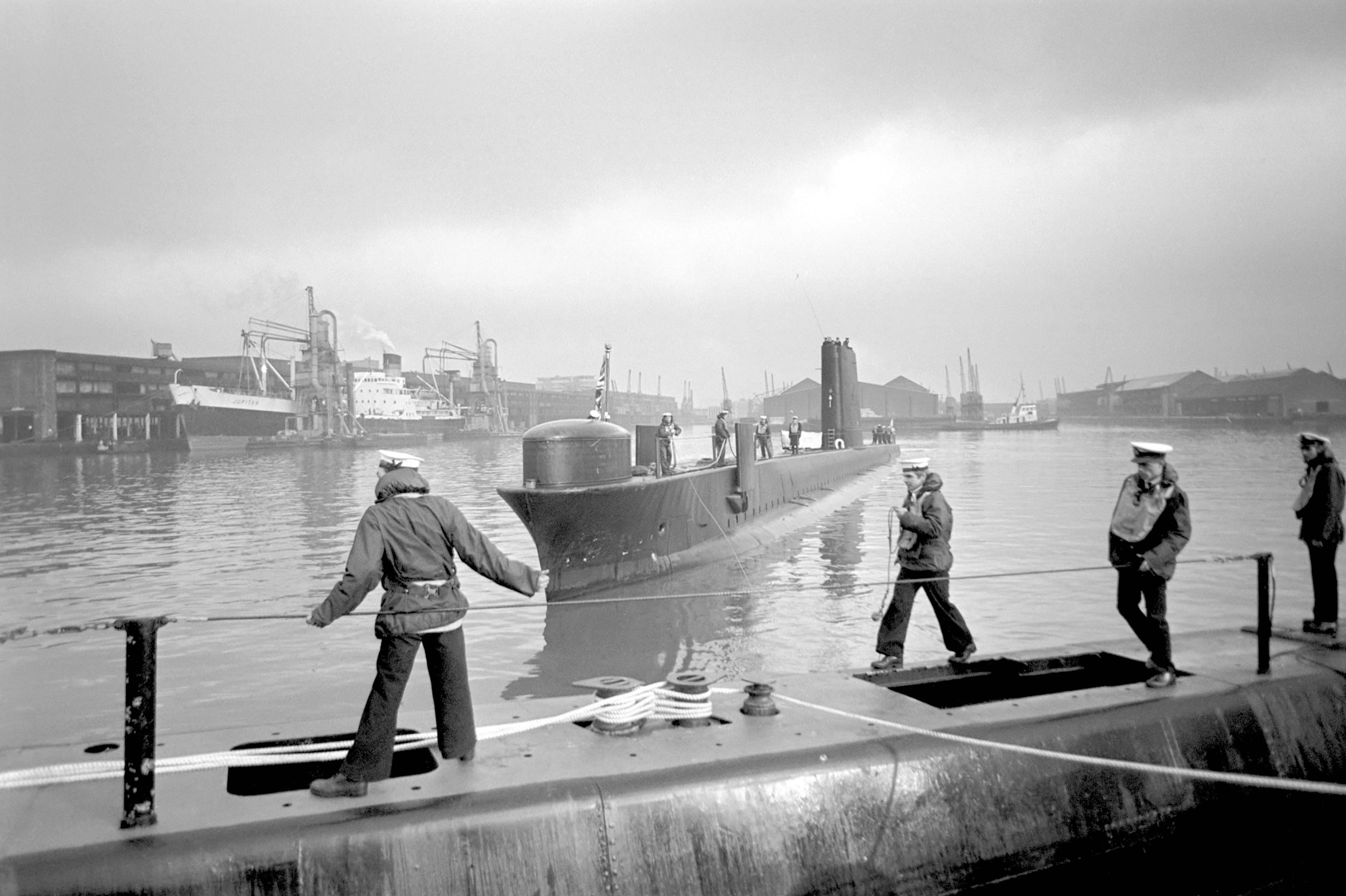12. Maritime and Naval
Periscopes Ahoy!
The docks played a hugely important role in both the First and Second World Wars, as hubs of munitions manufacturing… as well as getting provisions in and out of the country.

Photograph: Captured German submarine in Salford Docks (credit Manchester Postcards).
Trafford Park was a significant industrial centre at the time. When war came, many factories turned their attention to the war effort, supply munitions, gun bearings, tracks for tanks, radar equipment and building materials for army huts.
It was here that the Ford factory built Merlin engines for the Spitfire and Lancaster Bomber. Over 30,000 engines were produced and more than 17,000 people worked in the factory, of which 7,000 were women.
Trafford Park became a significant wartime target and factories were bombed on 23 December 1940, in what was later known as the ‘Manchester Blitz’. An estimated 684 people died and more than 2,000 were injured in these raids.
Once the bombing ended, human minesweepers who cleared the harbours of Europe began operations in the Manchester Ship Canal to locate bombs that had been dropped during the war.
Photograph: ‘Navy Boys’, despite the job, must have their fun. Here one takes a back dive in October 1945. Human Minesweepers diving in Salford Docks.
Submarine spotting in Salford!
It may sound far-fetched, but submarines have indeed travelled up the Manchester Ship Canal. The Oberon-class HMS Otter and its sister boats Olympus, Onyx and Andrew were on an official visit to Manchester when Otter had a minor collision with the Manchester ferry. Built for surveillance during the Cold War, Otter clearly didn’t see the ferry coming!
German submarines were also brought to Salford Quays after both the First and Second World Wars as a spectacle for visitors to explore.
Photo: HMS Otter arriving in Salford Docks after the collision in November 1969.
Today Imperial War Museum North is purpose-built to tell powerful stories of over a century of war.
IWMN at Salford Quays
Imperial War Museum North explores the impact of modern conflicts on people and society. The museum makes full use of its extraordinary architecture to deliver an award-winning immersive experience.
The building was the first in the UK to be designed by internationally acclaimed architect Daniel Libeskind. The exterior is based on the concept of a globe shattered by war and conflict.





